The Vespasianus Titus Tunnel is a remarkable testament to Roman engineering prowess, located in the ancient city of Seleuceia Pieria. Nestled at the base of the Nur Mountains near present-day Cevlik village in Turkey, this historical marvel has drawn the fascination of historians, architects, and travelers alike. Constructed during the Roman era, the tunnel was designed to safeguard the city from devastating floods, underscoring the ingenuity and foresight of its creators. Follow archeology.dulichvn.net to discover many hidden mysteries that have yet to be discovered.
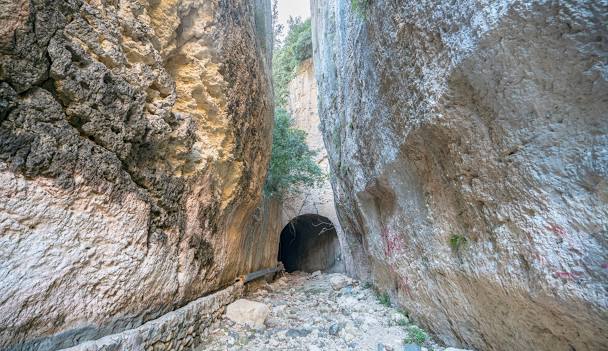
The Historical Significance of Seleuceia Pieria
The Location and Legacy
Seleuceia Pieria, presently known as the village of Cevlik, was a cornerstone of maritime trade and strategic connectivity in antiquity. Located approximately 35 kilometers southwest of Antakya, the ancient city of Antioch, Seleuceia Pieria served as a critical gateway to the eastern Mediterranean. Its position at the base of the rugged Nur Mountains placed it at the crossroads of bustling trade routes, linking the interior regions of Asia Minor with the Mediterranean world.
However, the city’s advantageous location also presented significant challenges. Seasonal floodwaters, laden with debris from the mountains, posed a constant threat to the harbor, endangering its functionality and the livelihoods it supported. Addressing these natural challenges required ingenuity and determination, which the Romans, with their advanced engineering expertise, were well-equipped to provide.
The Role of the Roman Empire
Under the Roman Empire, Seleuceia Pieria reached new heights of prosperity and influence. The Romans, celebrated for their visionary infrastructure, recognized the city’s potential as a vital port for both commerce and military operations. To ensure its sustained success, they embarked on ambitious projects to protect and enhance its infrastructure.
The construction of the Vespasianus Titus Tunnel exemplifies the Romans’ commitment to safeguarding their assets and the people who relied on them. By channeling floodwaters away from the harbor through this expertly engineered tunnel, they not only preserved the city’s economic lifeline but also demonstrated their unmatched ability to blend functionality with durability. This monumental project was a testament to the empire’s foresight and technological prowess.
UNESCO Recognition
In modern times, the Vespasianus Titus Tunnel has been rightfully acknowledged as a masterpiece of ancient engineering. Its inclusion as a UNESCO World Heritage site highlights its historical, architectural, and cultural significance. This prestigious designation underscores the importance of preserving the tunnel as a symbol of human ingenuity and a connection to our shared heritage.
Through UNESCO’s recognition, efforts to conserve and study the tunnel have gained momentum, ensuring that future generations can marvel at this extraordinary feat. Today, the Vespasianus Titus Tunnel is celebrated not only as a relic of the Roman Empire’s brilliance but also as an enduring reminder of humanity’s capacity to overcome challenges through innovation and collaboration.
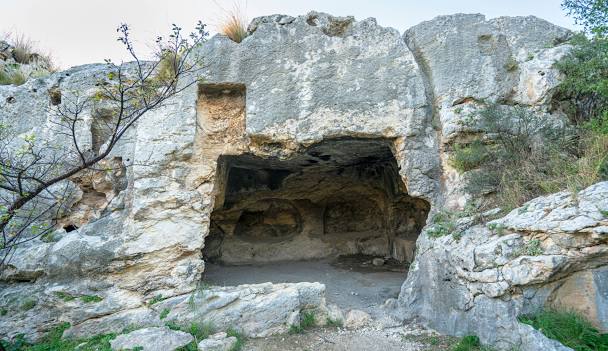
The Engineering Marvel of the Tunnel
Purpose and Design
The Vespasianus Titus Tunnel stands as a monumental example of Roman ingenuity, meticulously crafted to address the persistent threat of flooding in Seleuceia Pieria. The region’s harbor, vital to the city’s economic and strategic success, was at constant risk from torrents of water carrying sand and gravel down from the Nur Mountains. Recognizing the potential devastation, Roman engineers devised a groundbreaking solution: a massive tunnel to reroute these floodwaters safely away from the city and its harbor.
The design of the tunnel was both practical and visionary. It involved carving an extensive channel through solid rock, creating a controlled passageway to direct the water flow. This prevented sediment accumulation in the harbor, ensuring that Seleuceia Pieria remained operational as a key port city. The project exemplified the Romans’ ability to combine foresight with execution, creating infrastructure that addressed immediate needs while ensuring long-term sustainability.
Construction Techniques
The construction of the Vespasianus Titus Tunnel was a formidable feat of engineering, showcasing the remarkable skills of Roman architects and laborers. Without the advanced machinery available today, the Romans relied on sheer manpower and rudimentary tools to cut through the mountain’s rocky terrain. Workers used chisels, hammers, and wooden scaffolding to methodically carve out the tunnel, overcoming immense physical and logistical challenges.
This endeavor required precise planning and coordination, as the engineers had to maintain the structural integrity of the surrounding rock while creating a passage capable of withstanding significant water pressure. The project’s scale, complexity, and execution highlight the Romans’ exceptional expertise in large-scale infrastructure, setting a standard that would influence architectural practices for centuries.
Structural Features
Stretching approximately 1.4 kilometers (0.87 miles) in length, the Vespasianus Titus Tunnel is an awe-inspiring structure, both in size and design. Its height varies, with some sections reaching up to 7 meters (23 feet), allowing for the efficient redirection of floodwaters. The tunnel’s interior, though utilitarian in purpose, reflects the aesthetic principles of Roman architecture, blending functionality with an understated elegance.
The structure’s durability is a testament to the quality of Roman engineering. Even after centuries of exposure to natural elements, the tunnel remains largely intact, continuing to serve as a reminder of the extraordinary capabilities of its creators. Its design not only fulfilled a critical purpose but also symbolized the Romans’ deep understanding of environmental challenges and their ability to adapt to them with innovative solutions.
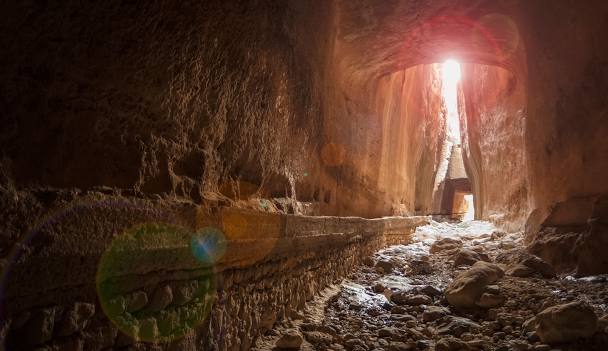
Exploring the Vespasianus Titus Tunnel Today
Accessibility and Visitor Experience
The Vespasianus Titus Tunnel offers a unique opportunity for visitors to step into the ancient world and explore one of the most remarkable feats of Roman engineering. Located near the village of Cevlik, the site is easily accessible, drawing history enthusiasts, adventurers, and travelers from around the globe. Walking through the tunnel’s ancient passageways provides an immersive experience, allowing visitors to marvel at the ingenuity and determination that brought this structure to life.
The path leading to the tunnel is well-maintained, ensuring a comfortable journey for visitors of all ages. Informative signage and available guides enrich the experience, offering context about the tunnel’s construction, purpose, and historical significance. Whether you’re a casual traveler or a passionate history buff, the Vespasianus Titus Tunnel promises a memorable and educational visit.
The Scenic Surroundings
Nestled at the base of the majestic Nur Mountains, the tunnel is set against a backdrop of natural beauty. The eastern Mediterranean coast, with its turquoise waters and lush greenery, provides a serene and picturesque setting that enhances the allure of the site.
The journey to the tunnel offers visitors a chance to explore the rugged yet breathtaking terrain of the surrounding area. As you walk through the site, you’re treated to panoramic views of the mountains and sea, creating a harmonious blend of history and nature. This scenic environment makes the visit not only a historical exploration but also a chance to appreciate the stunning landscapes of Turkey’s rich heritage.
Insights into Roman Innovation
Exploring the Vespasianus Titus Tunnel is more than a journey through an ancient structure—it’s an encounter with the innovative spirit of the Roman Empire. Visitors can gain a deeper appreciation for the engineering techniques and problem-solving skills that enabled the construction of this monumental project.
Guided tours provide in-depth insights into the tunnel’s creation, highlighting the methods used by Roman engineers to carve through solid rock and manage the flow of floodwaters effectively. These tours often include fascinating anecdotes about the challenges faced during construction and the ingenuity required to overcome them.
Standing within the tunnel, visitors can feel the connection to a civilization that shaped the course of history through its architectural brilliance. The Vespasianus Titus Tunnel serves not only as a testament to Roman technological prowess but also as an enduring symbol of human innovation and resilience.
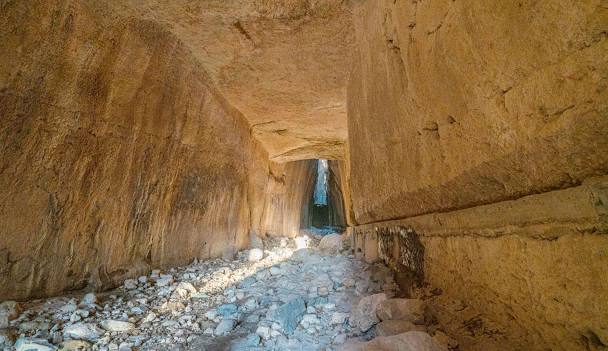
See more: King Ramses VI: The Final Pharaoh of Egypt’s Twentieth Dynasty
Conclusion
The Vespasianus Titus Tunnel stands as a monumental achievement in Roman engineering, reflecting the ingenuity, vision, and resilience of its creators. Its historical significance, coupled with its stunning location, makes it a must-visit destination for those seeking to uncover the marvels of ancient civilization. Through its preservation and continued exploration, the tunnel remains a bridge between the past and the present, inspiring awe and admiration across the centuries.

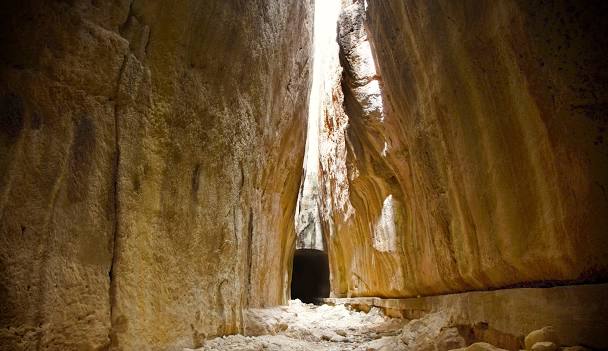
CÁC TIN KHÁC
Mary Walton: The Forgotten Inventor Who Helped Clean Up America’s Cities
Tomb of Queen Nefertari in the Valley of the Queens, Egypt
Discover the Hypostyle Hall of the Temple of Hathor at Dendera
Venus de Losange: Unveiling the Mystery of a 20,000-Year-Old Paleolithic Icon